Entry Database : PDB / ID : 1rg6Title Solution structure of the C-terminal domain of p63 second splice variant p63 Keywords / Function / homology Function Domain/homology Component
/ / / / / / / / / / / / / / / / / / / / / / / / / / / / / / / / / / / / / / / / / / / / / / / / / / / / / / / / / / / / / / / / / / / / / / / / / / / / / / / / / / / / / / / / / / / / / / / / / / / / / / / / / / / / / / / / / / / Biological species Homo sapiens (human)Method / Authors Cadot, B. / Candi, E. / Cicero, D.O. / Desideri, A. / Mele, S. / Melino, G. / Paci, M. Journal : To be Published Title : Solution structure of the C-terminal domain of p63Authors : Cadot, B. / Candi, E. / Cicero, D.O. / Desideri, A. / Mele, S. / Melino, G. / Paci, M. History Deposition Nov 11, 2003 Deposition site / Processing site Revision 1.0 Nov 23, 2004 Provider / Type Revision 1.1 Apr 29, 2008 Group Revision 1.2 Jul 13, 2011 Group Revision 1.3 Mar 2, 2022 Group / Database references / Derived calculationsCategory database_2 / pdbx_nmr_software ... database_2 / pdbx_nmr_software / pdbx_nmr_spectrometer / pdbx_struct_assembly / pdbx_struct_oper_list / struct_ref_seq_dif Item _database_2.pdbx_DOI / _database_2.pdbx_database_accession ... _database_2.pdbx_DOI / _database_2.pdbx_database_accession / _pdbx_nmr_software.name / _pdbx_nmr_spectrometer.model / _struct_ref_seq_dif.details Revision 1.4 May 22, 2024 Group / Category / chem_comp_bond
Show all Show less
 Open data
Open data Basic information
Basic information Components
Components Keywords
Keywords Function and homology information
Function and homology information Homo sapiens (human)
Homo sapiens (human) Authors
Authors Citation
Citation Journal: To be Published
Journal: To be Published Structure visualization
Structure visualization Molmil
Molmil Jmol/JSmol
Jmol/JSmol Downloads & links
Downloads & links Download
Download 1rg6.cif.gz
1rg6.cif.gz PDBx/mmCIF format
PDBx/mmCIF format pdb1rg6.ent.gz
pdb1rg6.ent.gz PDB format
PDB format 1rg6.json.gz
1rg6.json.gz PDBx/mmJSON format
PDBx/mmJSON format Other downloads
Other downloads 1rg6_validation.pdf.gz
1rg6_validation.pdf.gz wwPDB validaton report
wwPDB validaton report 1rg6_full_validation.pdf.gz
1rg6_full_validation.pdf.gz 1rg6_validation.xml.gz
1rg6_validation.xml.gz 1rg6_validation.cif.gz
1rg6_validation.cif.gz https://data.pdbj.org/pub/pdb/validation_reports/rg/1rg6
https://data.pdbj.org/pub/pdb/validation_reports/rg/1rg6 ftp://data.pdbj.org/pub/pdb/validation_reports/rg/1rg6
ftp://data.pdbj.org/pub/pdb/validation_reports/rg/1rg6 Links
Links Assembly
Assembly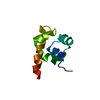
 Components
Components Homo sapiens (human) / Gene: p63 / Plasmid: pGEXsx2 / Species (production host): Escherichia coli / Production host:
Homo sapiens (human) / Gene: p63 / Plasmid: pGEXsx2 / Species (production host): Escherichia coli / Production host: 
 Sample preparation
Sample preparation Processing
Processing Movie
Movie Controller
Controller



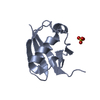
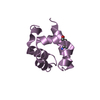
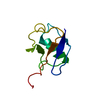
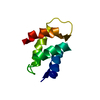
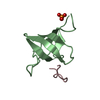
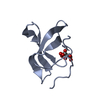

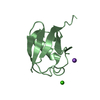
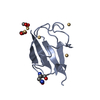
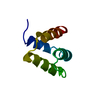
 PDBj
PDBj








 HSQC
HSQC